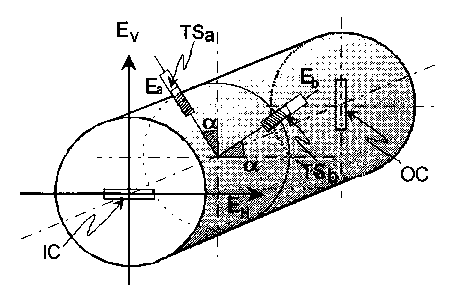Some of the information on this Web page has been provided by external sources. The Government of Canada is not responsible for the accuracy, reliability or currency of the information supplied by external sources. Users wishing to rely upon this information should consult directly with the source of the information. Content provided by external sources is not subject to official languages, privacy and accessibility requirements.
Any discrepancies in the text and image of the Claims and Abstract are due to differing posting times. Text of the Claims and Abstract are posted:
| (12) Patent: | (11) CA 2194077 |
|---|---|
| (54) English Title: | DUAL-MODE CAVITY FILTER |
| (54) French Title: | FILTRE A CAVITE BIMODAL |
| Status: | Term Expired - Post Grant Beyond Limit |
| (51) International Patent Classification (IPC): |
|
|---|---|
| (72) Inventors : |
|
| (73) Owners : |
|
| (71) Applicants : |
|
| (74) Agent: | ROBIC AGENCE PI S.E.C./ROBIC IP AGENCY LP |
| (74) Associate agent: | |
| (45) Issued: | 2004-11-02 |
| (22) Filed Date: | 1996-12-27 |
| (41) Open to Public Inspection: | 1997-06-29 |
| Examination requested: | 2001-10-25 |
| Availability of licence: | N/A |
| Dedicated to the Public: | N/A |
| (25) Language of filing: | English |
| Patent Cooperation Treaty (PCT): | No |
|---|
| (30) Application Priority Data: | ||||||
|---|---|---|---|---|---|---|
|
Comprising one or more resonant cavities in which are produced two resonant modes at two different frequencies f1 and f2, both modes having essentially the same field distributions but rotated 90 ° with respect to each other. Each cavity comprises a tuning element (TS a) for tuning the resonant frequency f1 of the first mode along a first axis, a tuning element (TS b) for tuning the resonant frequency f2 of the second mode along a second axis perpendicular to the first, input coupling means (IC) and output coupling means (OC) for injecting into and extracting from the cavity, respectively, a radiofrequency signal along axes not parallel to those of resonance. Filter tuning is done by using only two tuning elements, which means that the filter cost is lower and the tuning time is reduced.
Comprenant une ou plusieurs cavités résonnantes dans lesquelles sont produites deux modes de résonance à deux fréquences différentes F1 et F2, les deux modes ayant essentiellement les mêmes distributions de champ, mais avec une rotation de 90 degrés l'un par rapport à l'autre. Chaque cavité comporte un élément d'accord (TS a) pour accorder la fréquence de résonance f1 du premier mode suivant un premier axe, un élément d'accord (TS b) pour l'accord de la fréquence de résonance f2 du second mode suivant un second axe perpendiculaire au premier, un moyen de couplage d'entrée (IC) et un moyen de couplage de sortie (OC) pour injecter dans, et extraire de la cavité, respectivement, un signal radiofréquence suivant des axes non parallèles à ceux de la résonance. L'accord de filtre se fait en utilisant seulement deux éléments d'accord, ce qui signifie que le coût du filtre est plus faible et le temps d'accord est réduit.
Note: Claims are shown in the official language in which they were submitted.
Note: Descriptions are shown in the official language in which they were submitted.

2024-08-01:As part of the Next Generation Patents (NGP) transition, the Canadian Patents Database (CPD) now contains a more detailed Event History, which replicates the Event Log of our new back-office solution.
Please note that "Inactive:" events refers to events no longer in use in our new back-office solution.
For a clearer understanding of the status of the application/patent presented on this page, the site Disclaimer , as well as the definitions for Patent , Event History , Maintenance Fee and Payment History should be consulted.
| Description | Date |
|---|---|
| Inactive: Expired (new Act pat) | 2016-12-27 |
| Inactive: Correspondence - MF | 2010-08-10 |
| Inactive: IPC from MCD | 2006-03-12 |
| Grant by Issuance | 2004-11-02 |
| Inactive: Cover page published | 2004-11-01 |
| Inactive: Final fee received | 2004-08-18 |
| Pre-grant | 2004-08-18 |
| Notice of Allowance is Issued | 2004-05-14 |
| Notice of Allowance is Issued | 2004-05-14 |
| Letter Sent | 2004-05-14 |
| Inactive: Approved for allowance (AFA) | 2004-05-03 |
| Amendment Received - Voluntary Amendment | 2004-04-05 |
| Inactive: S.30(2) Rules - Examiner requisition | 2003-10-08 |
| Inactive: Status info is complete as of Log entry date | 2001-11-20 |
| Letter Sent | 2001-11-20 |
| Inactive: Application prosecuted on TS as of Log entry date | 2001-11-20 |
| All Requirements for Examination Determined Compliant | 2001-10-25 |
| Request for Examination Requirements Determined Compliant | 2001-10-25 |
| Letter Sent | 1999-07-26 |
| Application Published (Open to Public Inspection) | 1997-06-29 |
There is no abandonment history.
The last payment was received on 2003-11-18
Note : If the full payment has not been received on or before the date indicated, a further fee may be required which may be one of the following
Patent fees are adjusted on the 1st of January every year. The amounts above are the current amounts if received by December 31 of the current year.
Please refer to the CIPO
Patent Fees
web page to see all current fee amounts.
Note: Records showing the ownership history in alphabetical order.
| Current Owners on Record |
|---|
| ALCATEL |
| Past Owners on Record |
|---|
| JOSE LUIS CACERES ARMENDARIZ |